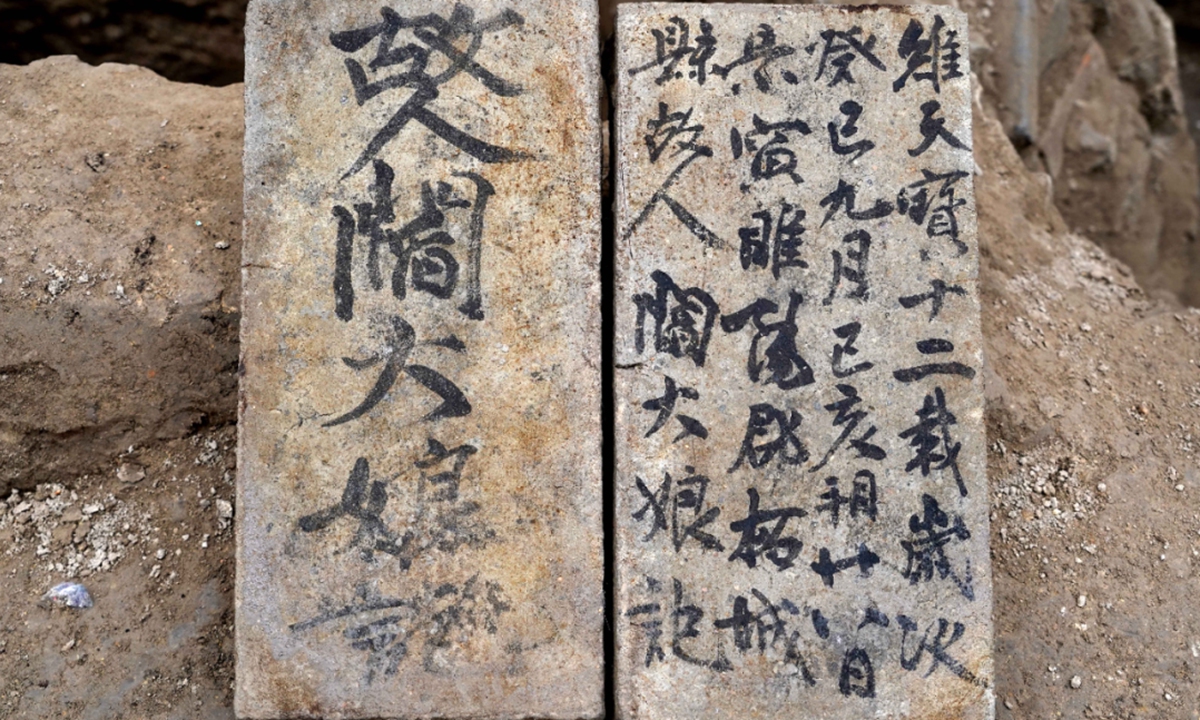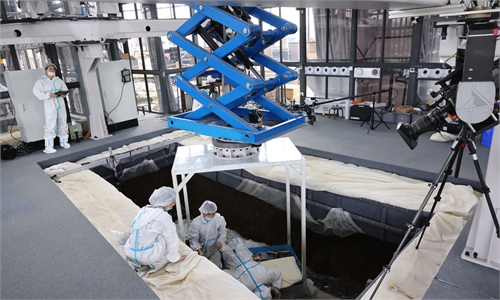ARTS / CULTURE & LEISURE
Epitaph bricks found in Henan offer new historical insight

Archaeologists have discovered six tombs from the Tang Dynasty (618-907 AD), and two epitaph bricks recording the identity, birthplace and date of death of the person in the tomb in city ruins dating further back to the Spring and Autumn Period (770BC-476BC) in Central China's Henan Province, Photo: Screenshot from Xinhua
Archaeologists have discovered six tombs from the Tang Dynasty (618-907 AD) in city ruins dating further back to the Spring and Autumn Period (770BC-476BC) in Central China's Henan Province, offering evidence of ancient Chinese "city-above-city" construction methods.
The Tang tombs were discovered at the well-known ancient city ruins in Shangqiu, Henan. In one of the tombs, two epitaph bricks were unearthed, recording the identity, birthplace and date of death of the person in the tomb, Xinhua News Agency reported.
The archaeological team said that according to the inscription on the epitaph brick, the tomb dates back to 753 AD and it is located at the juncture of the ruined Song Kingdom ancient city wall above and the Suiyang ancient city wall below.
"This means that after the Song Kingdom city, a group of people who lived in the Tang Dynasty settled and built a new city on the basis of the old city wall ruins, which is exactly the Suiyang ancient city in the Tang Dynasty as we know it today," Yue Hongbin, a researcher with the Institute of Archeology at the Chinese Academy of Social Sciences and also director of the Shangqiu Institute of Cultural Relics and Archeology, noted in the interview.
In addition, a number of copper coins, bronze mirrors, decorative clam shells and two clay terracotta pots painted in white were found in the tomb.
The Shangqiu ruins have a history of over 3,000 years. The area has been known for its layers and layers of different ancient city walls including Liangyuan City of the Han Dynasty (206BC-AD220) and Songzhou City of the Tang Dynasty.


